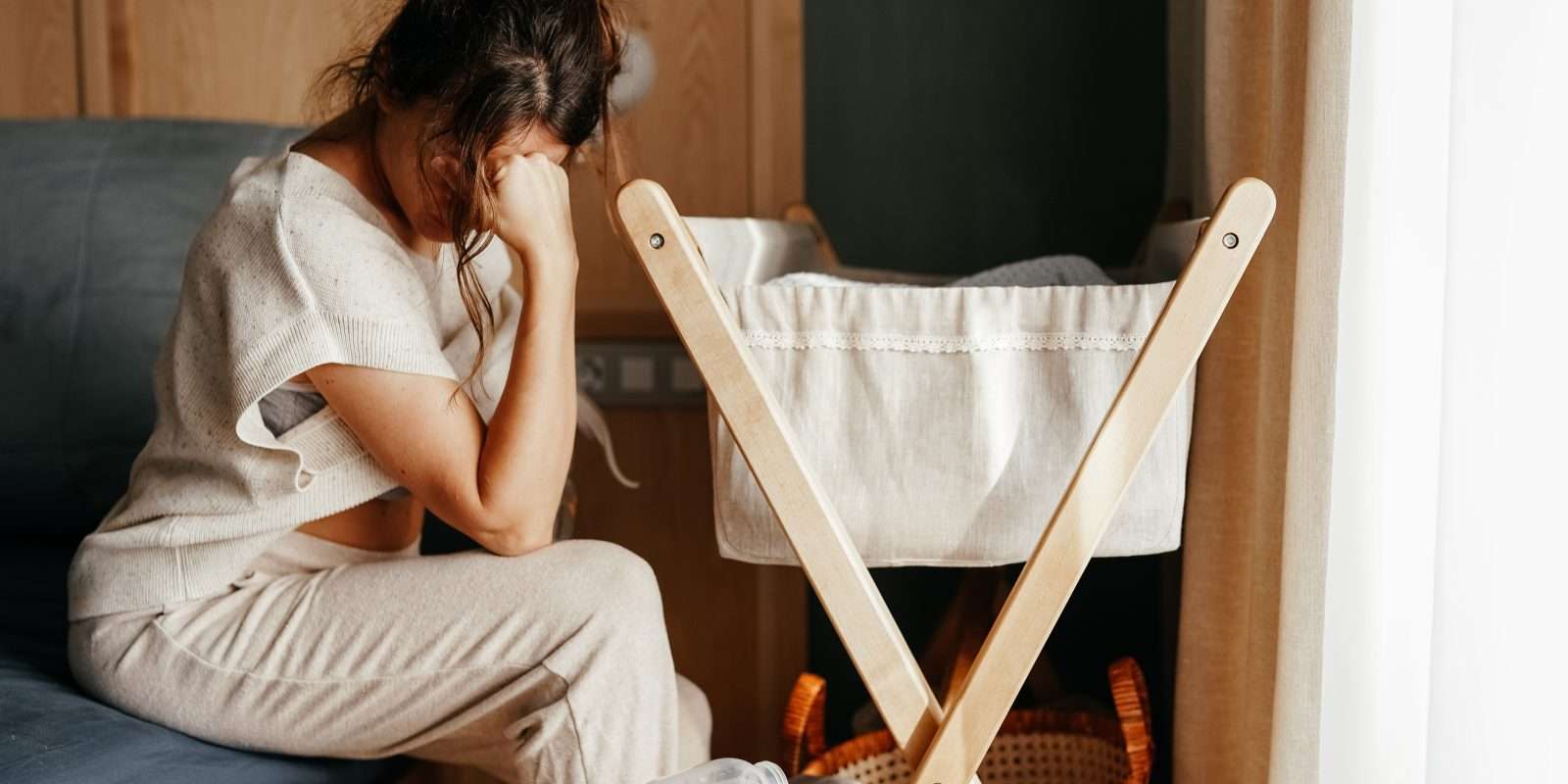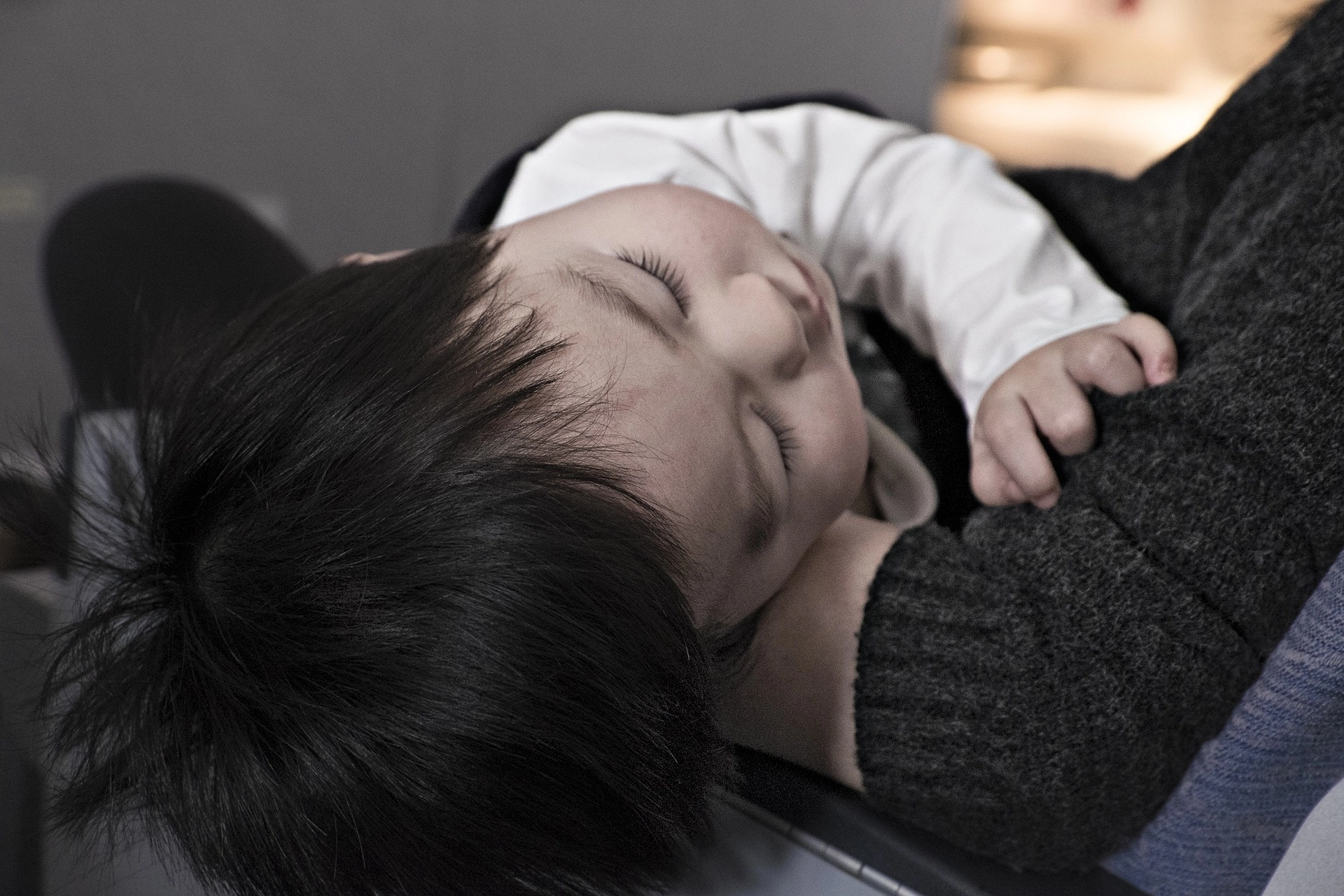Chances are, you have heard about postpartum depression or PPD. You may also have heard that moms of multiples risk developing postpartum depression at higher rates than moms who have a single baby.
Most people realize that there is a percentage of women who experience feelings of sadness after they deliver their baby or babies. The reality is that many people have no idea of the severity and complexity of life with PPD.
In fact, there are a number of discouraging myths that keep many women from seeking help when they experience the signs of depression after delivery.
In this article, we will look at what postpartum depression is, why it occurs, debunk some popular myths, and talk about how to get help for you or someone you love.
Postpartum depression does not have to derail your experience as a new mom of multiples.
What is postpartum depression?
There is not one single underlying cause of PPD. Instead, experts believe that there is a myriad of contributing factors that lead to developing this form of clinical depression.
Postpartum or perinatal depression affects as many as 1 in 7 women. It is so common that it is the most common complication of childbirth.
Who is most likely to develop postpartum depression?
PPD can affect any woman. It strikes women who experience easy pregnancies, as well as, those with difficult pregnancies. First-time mothers and mothers who have one or more children can also experience PPD. It doesn’t matter if a new mom is married or single, and things like income, age, ethnicity, culture, and education make little difference in your risk of experiencing depression after birth.
One group of women who are at a higher risk of suffering from postpartum depression are moms of multiples (or MoMs). MoMs are much more likely to develop PPD than moms of singletons. While not all twin moms will experience symptoms, they are at an increased risk.
What are the risk factors for postpartum depression?
- A change in hormone levels after childbirth
- Previous experience of depression or anxiety
- Loneliness, not having close friends and family around
- Family history of depression or mental illness
- The stress involved in caring for a newborn and managing new life changes
- Having a challenging baby who cries more than usual, is hard to comfort, or whose sleep and hunger needs are irregular and hard to predict
- Having a baby with special needs (premature birth, medical complications, illness)
- Lack of family support
- The health consequences of childbirth, including urinary incontinence, anemia, blood pressure changes, and alterations in metabolism
- The physical changes during and after pregnancy
- Other emotional stressors, such as the death of a loved one or family problems
- Financial or employment problems
- Caring for twins, triplets, or higher-order multiples
- Isolation and lack of social support
- Changes in the sleep cycle
Difficulties with breastfeeding might also be linked to PPD. New moms who have difficulty breastfeeding in the first 2 weeks after delivering their babies have a higher risk of PPD 2 months later, according to a study at the University of North Carolina in Chapel Hill.
What is the difference between baby blues and depression?
Many new moms confuse their own postpartum depression with the less serious “baby blues.” Baby blues happen when moms feel more melancholic than is typical for them after delivering their infant. As hormone levels drop, moms can feel moody, sad, tired, and generally “blue.” This is very different from PPD.
Unlike the baby blues, PPD doesn’t go away on its own. It can impact a mother’s ability to care for her newborn. The symptoms are much more debilitating and longer-lasting. Any mom who is concerned about how she is feeling should talk to their doctor in order to stay aware of what is going on.
How prevalent is postpartum depression?
Rates of PPD in singleton pregnancies
According to a report and statement issued by the U.S. Preventive Services Task Force, 8.9 percent of all pregnant women and 37 percent of new mothers experience clinical depression in the months before or after giving birth. Less research has been done on new fathers, but some studies suggest that about 10 percent of dads may also experience postpartum depression. For half of the women diagnosed with PPD, this is their first episode of depression.
Rates of PPD in twin pregnancy
Moms of multiples experience PPD at a higher rate than singleton moms. Researchers have not yet isolated whether these higher rates are due to physical etiology (such as higher levels of hormones) or the additional stress of caring for two newborns.
A 2009 study, published in the journal Pediatrics found that new MoMs were 43 percent more likely to have postpartum depression than were mothers of singletons. While not all moms of multiples will develop PPD, it is important for these MoM’s and their families to be on the lookout for potential symptoms.
Recognizing the signs of postpartum depression
In theory, it sounds like it would be fairly simple to identify and treat PPD, right?
The reality is that after delivering newborn twins, in the sleep-deprived newness of parenting, things can get muddy. MoM’s often think their sadness or anxiety will go away. They often blame their feelings on exhaustion. Understanding the signs of PPD can help to tease apart normal postpartum blues with true depression.
What are the symptoms of postpartum depression?
The warning signs are different for everyone but may include:
- A loss of pleasure or interest in things you used to enjoy
- Fear of not being a good mother
- Eating much more, or much less, than usual
- Anxiety — all or most of the time
- Fear of being left alone with the baby
- Racing thoughts
- Feeling guilty or worthless, including blaming yourself
- Excessive irritability, anger, or agitation
- Sadness, crying uncontrollably for very long periods of time
- Difficulty sleeping, beyond the typical new parent lack of sleep
- Disinterest in the baby, family, and friends
- Difficulty concentrating, remembering details, or making decisions
- Thoughts of hurting yourself or the baby (seek help immediately if you experience this symptom).
What to do when you suspect postpartum depression?
If you suspect someone you love may be suffering from any form of postpartum depression, anxiety, or even blues – the first thing to do is talk about it. Many moms don’t even realize what is going on. In many cases, it is the loved ones that first recognize the symptoms.
However, if you are feeling any of the earlier noted signs of PPD, talk to your doctor right away. There is no need to suffer in silence. PPD is treatable!
Fighting the stigma of postpartum depression
Despite the mountains of research surrounding postpartum depression and dialogue that is opening up, many women still feel a stigma when it comes to PPD. There are a number of myths that keep many people in the dark about the realities surrounding postpartum depression.
Debunking the myths
Myth #1: Moms who have PPD don’t bond with their babies
Truth: Moms with PPD love their babies just as much as moms who do not have PPD. Depression is in no way a sign that a mom will not bond with her baby and love her twins the same as any other mother.
Myth #2: You can only get PPD if you had a previous mental illness
Truth: While women with a history of mental illness (specifically a mood disorder) are slightly more likely to develop postpartum depression, any new mom can experience it regardless of health history. What’s more is that MoM’s who have experienced a mental illness in the past, are not necessarily going to develop PPD.
Myth #3: Symptoms show up right after birth
Truth: In many cases, moms will not experience the symptoms of PPD for weeks (or even months) after giving birth. In some cases, women can display signs during the last stage of pregnancy and some won’t develop until as much as a year after delivery. Typically, the condition develops within 4 to 6 weeks after giving birth, but it can sometimes take several months to appear.
Myth #4: PPD will go away on its own
Truth: PPD is a serious condition that requires treatment. It often will not subside on its own and may require a combination of therapy and medication to alleviate the symptoms. Many new moms wait in hopes that the symptoms will retreat on their own, but inevitably prolong their negative feelings.
Myth #5: Moms with PPD cry nonstop
Truth: Postpartum depression can take many forms. While some moms of multiples will be tearful, others will experience PPD as isolation, anxiety, or withdrawal. A woman does not have to cry around the clock to be experiencing PPD.
Seeking help for postpartum depression
If you experience these symptoms during pregnancy or after delivering your babies you should talk to your doctor. Also, if you recognize any of these signs in someone you love, encourage them to talk to a medical professional. Many women delay seeking treatment for PPD and suffer in silence for much longer than is necessary.
Too few women seek help for postpartum depression
In a survey published in the Journal of Psychiatric Practice, parents of twins or other multiples reported experiencing the most difficulty during the first three months of their babies’ lives. The study included 244 parents of twins and other multiples (including 197 mothers and 44 spouses or partners), asking about parents’ mental health during the postpartum period.
They found that, although 48 percent of the study participants had struggled emotionally after their babies were born, very few got help. Many parents reported that with caring for multiple babies at once, finding childcare, and the financial stress of finding a therapist, often felt like another burden.
Coping strategies
In addition to psychological interventions and medication, there are a number of things new moms can do to help cope with the stress of parenting two babies. Using some or all of these coping skills in the face of PPD can help improve outcomes and manage symptoms.
- Get some exercise. Okay, maybe you aren’t ready to hit the gym but simply taking a walk, going for a bike ride, or even a few minutes of dancing with cranky babies can go a long way.
- Make time for yourself. While finding a few quiet moments for yourself may seem impossible, they are so important. Make sure to take a break and focus on yourself. Take a shower, talk to a friend on the phone, meditate, or do anything that makes you feel like yourself again.
- Stay on top of your diet. This point covers two important aspects. First, if you are breastfeeding make sure you are getting enough calories. Second, be sure you are making good food choices that will fuel your tired mind and body.
- Get your rest. This is probably the most laughable on our list. Once you are done chuckling at our suggestion, read on. We realize that adding an extra hour of sleep to your day is highly unlikely, remember that rest is more than sleep. A 20-minute power nap, meditation, or mindfulness and just a micro-break a few times each day can help keep you going.
- Connect with people. One of the biggest sources of melancholy new moms report is feeling isolated. Long hours spent just you and your babies can be an isolating experience. Connect with friends or family or join a Moms of Multiples group near you.
Despite the growing body of information about postpartum depression and its impact on moms of multiples, there is still a gap that needs to be bridged. Too many women are left untreated and suffering in silence. The more information moms-to-be and new moms have, the more they can understand what is going on.
Postpartum depression is a real diagnosis and is very treatable. Be on the lookout for the signs and symptoms. If you or someone you love are experiencing any, be sure to talk to a medical professional right away. There is no need to suffer in silence.
Resources:
American Psychological Association – What is postpartum depression & anxiety?
Medical News Today – What to know about postpartum depression
National Public Radio – Mommy Mentors Help Fight The Stigma Of Postpartum Mood Disorder
National Public Radio – Pssst: Parenting Twins Can Be Depressing
Obstetrics and Gynecology – Early breastfeeding experiences and postpartum depression
Pediatrics – Multiple Births Are a Risk Factor for Postpartum Maternal Depressive Symptoms
Postpartum Support International – Depression During Pregnancy & Postpartum
US Preventative Services Task Force – Perinatal Depression: Preventive Interventions






